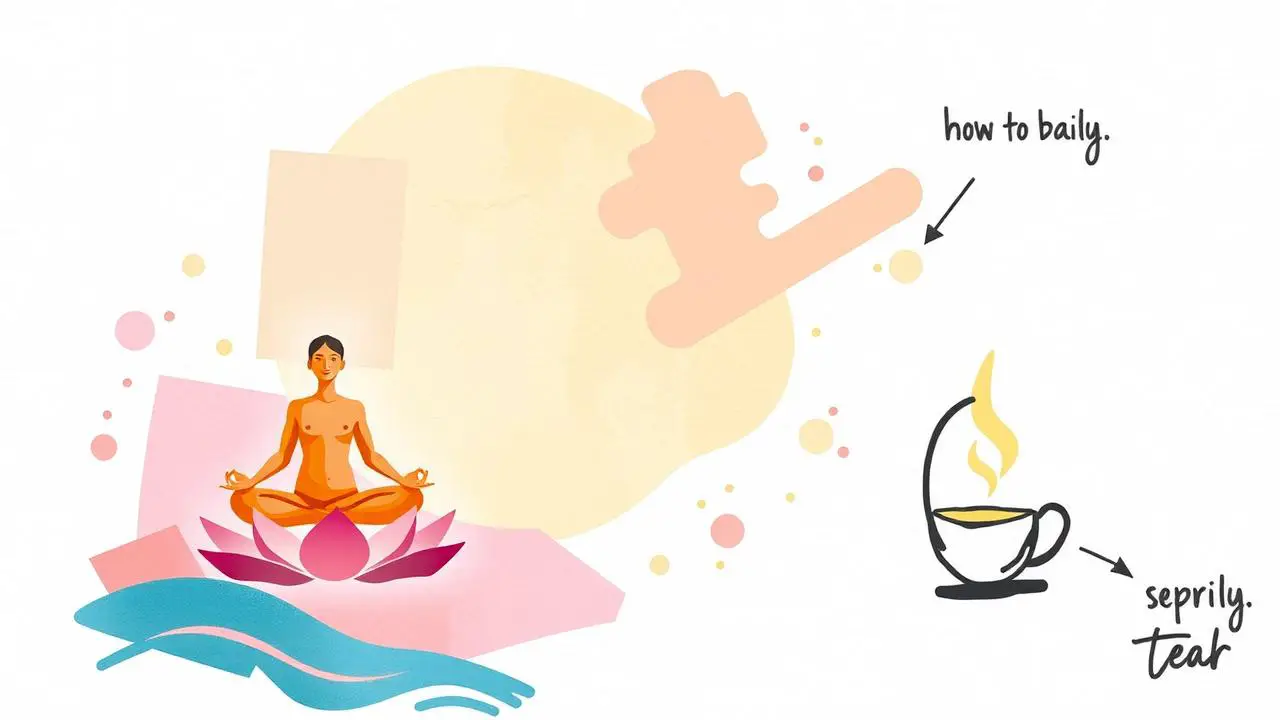Mindful leadership has become an increasingly indispensable aspect of effective management in today’s ever-evolving corporate landscape. The integration of mindfulness practices into leadership has shown to yield a myriad of benefits, not only for individual leaders but also for the broader organizational culture. From bolstering self-awareness and emotional intelligence to fostering a more cohesive and productive work environment, the potential impact of mindful leadership is substantial.
In this article, we will explore real-life examples and actionable strategies that illuminate the transformative power of mindful leadership, offering valuable insights for leaders seeking to navigate the complexities of modern leadership with poise and efficacy.
Key Takeaways
- Mindful leadership enhances self-awareness, emotional intelligence, and decision-making skills.
- It promotes a positive work culture, employee well-being, and effective communication and collaboration within teams.
- Mindful leadership reduces stress, improves work-life balance, and fosters creativity and innovation.
- Practicing mindfulness through meditation, breathing exercises, and mindful walking can cultivate mindfulness and enhance leadership effectiveness.
Benefits of Mindful Leadership
The benefits of mindful leadership extend beyond individual well-being and encompass positive organizational outcomes. By integrating mindfulness into leadership practices, decision-making processes are enhanced, leading to more thoughtful and strategic choices. This, in turn, fosters a positive work culture where employees feel valued and supported, ultimately improving overall productivity and satisfaction.

Mindful leaders create an environment that encourages open communication, collaboration, and creativity, resulting in a more cohesive and resilient team. Furthermore, fostering a culture of self-awareness and empathy within leadership trickles down to every level of the organization, promoting a sense of psychological safety and trust.
This holistic approach to leadership not only benefits individuals but also contributes to the overall success and well-being of the organization.
Major General Gale Pollock’s Story
During a momentous event in Washington DC, Major General Gale Pollock had an extraordinary encounter that exemplified the power of stopping and noticing in everyday life. As the space shuttle Discovery circled around the city, she paused and joined a group of onlookers, capturing a picture of the shuttle and titling it ‘Mindfulness.’
This experience, shared during a Mindful Leadership retreat, vividly demonstrated mindful leadership in action. Major General Pollock’s story emphasizes the significance of stopping and noticing, highlighting how these simple yet profound actions can lead to a deeper connection with the present moment and the world around us.

It serves as a powerful reminder of the impact of mindfulness in leadership and everyday experiences.
Mindfulness Practices for Leaders
Major General Gale Pollock’s story vividly exemplifies the impact of mindfulness in leadership and everyday experiences, underscoring the value of incorporating mindfulness practices for leaders.
To integrate mindfulness, leaders can employ various techniques such as meditation, breathing exercises, body scan meditation, mindful walking, and loving-kindness meditation.
These practices cultivate self-awareness, emotional regulation, and empathy, fostering a positive work culture and enhancing decision-making skills.

Janice Marturano and the Institute for Mindful Leadership play a crucial role in training and supporting leaders to explore mindfulness and its application in leadership excellence.
Janice Marturano and Mindful Leadership
Janice Marturano’s pioneering work in the field of mindful leadership has significantly impacted the way leaders integrate mindfulness into their professional and personal lives.
Through the Institute for Mindful Leadership, Marturano has developed mindful leadership techniques for stress management, focusing on the role of mindfulness in decision making for leaders.
Her experience as the founder and executive director of the Institute, along with her background at General Mills, has provided her with a unique insight into the challenges leaders face.

By emphasizing the importance of self-awareness, emotional intelligence, and mindfulness practices, Marturano’s approach enables leaders to navigate complexities while maintaining their well-being.
Her practical guide, ‘Finding the Space to Lead: A Practical Guide to Mindful Leadership,’ serves as a valuable resource for those seeking to integrate mindfulness into their leadership style.
Impact of Mindful Leadership
The influence of mindful leadership is profoundly shaping the ethos of contemporary organizational environments, fostering a culture of self-awareness, collaboration, and well-being among individuals and teams. Implementing mindful leadership strategies in the workplace yields significant positive impacts.
| Benefits of Mindful Leadership | Examples |
|---|---|
| Enhanced self-awareness and emotional intelligence | Improved decision-making and problem-solving skills |
| Positive work culture and employee well-being | Better communication and collaboration within teams |
| Reduced stress and improved work-life balance | Major General Gale Pollock’s experience with ‘stopping and noticing’ |
| Cultivation of gratitude and meaningful relationships | Janice Marturano and the Institute for Mindful Leadership |
These practices not only enhance individual well-being but also contribute to a more harmonious and productive work environment. By integrating mindful leadership into everyday work practices, organizations can foster a culture of mindfulness and compassion, leading to a more engaged and resilient workforce.

Frequently Asked Questions
How Can Mindful Leadership Impact an Organization’s Financial Performance and Bottom Line?
Mindful leadership positively impacts an organization’s financial performance and bottom line by enhancing productivity and employee engagement. It fosters a culture of self-awareness, effective decision-making, and well-being, leading to improved operational efficiency and performance.
What Are Some Practical Strategies for Incorporating Mindfulness Practices Into a Busy Leader’s Daily Routine?
Amidst a busy leader’s routine, incorporating mindfulness practices is pivotal. Practical strategies like integrating short meditation breaks, mindful breathing exercises, and walking meetings can enhance focus, decision-making, and team collaboration, ultimately impacting organizational well-being and performance.
How Does Major General Gale Pollock’s Experience With Mindfulness Translate to Practical Leadership Skills and Decision-Making?
Major General Gale Pollock’s mindfulness experience reflects the power of stopping and noticing in leadership. Integrating mindfulness fosters self-awareness, emotional intelligence, and effective decision-making. Mindful leaders create positive work cultures and prioritize employee well-being, enhancing leadership effectiveness.
Can Mindfulness Practices Help Leaders Navigate Difficult or High-Pressure Situations With More Ease and Clarity?
Mindfulness practices equip leaders with mindful decision-making and stress management techniques. They enable leaders to navigate high-pressure situations with ease and clarity, fostering a compassionate, strategic approach to leadership that promotes well-being and effective outcomes.

What Are Some Common Challenges or Barriers That Leaders Face When Trying to Adopt a Mindful Leadership Approach, and How Can These Be Overcome?
Overcoming barriers to adopting mindful leadership involves addressing resistance to change, fostering a culture of psychological safety, and providing adequate training and support. Mindful communication, active listening, and empathy are crucial for successful implementation.
Conclusion
In conclusion, the practice of mindful leadership offers numerous benefits for individuals and organizations alike. Through self-awareness, emotional intelligence, and effective decision-making, leaders can foster a positive work culture and reduce stress in the workplace.
The experiences of leaders like Major General Gale Pollock and the expertise of Janice Marturano highlight the transformative potential of mindful leadership.
By integrating mindfulness practices, leaders can unlock the power of mindful leadership to create a more productive and harmonious professional environment.

Frequently Asked Questions
Can I practice mindfulness while I work?
Yes, it’s possible to incorporate mindfulness into your work day. Taking short breaks to focus on your breath or consciously engaging in a task without distraction can be a form of mindfulness practice. Some activities, like mindful listening during meetings, can even enhance your work performance.
Will practicing mindfulness make me more open to negative thoughts?
Mindfulness can expose us to thoughts we’ve been trying to avoid, both positive and negative. The key is to approach each thought without judgment and accept its presence. This approach can increase your emotional resilience over time, making it easier to manage negative thoughts and feelings when they arise.
Can children practice mindfulness?
Absolutely. Children can greatly benefit from mindfulness. It can help improve their attention span, emotional intelligence, social skills, and overall mental health. There are many guided mindfulness exercises available specifically for children.
Does mindfulness require meditation?
While meditation is one way to practice mindfulness, it is not the only way. Any activity that encourages you to focus your attention on the present moment without passing judgment can be a form of mindfulness practice.
When is the best time to practice mindfulness?
The best time to practice mindfulness can vary depending on your personal preference and schedule. Some find it beneficial to practice mindfulness first thing in the morning to begin their day with a clear, calm mind. Others might prefer to practice throughout the day as situations arise or at night to prepare for a restful sleep.
Statistics
- The Journal of Alternative and Complementary Medicine reported that mindfulness practitioners experienced 20% fewer episodes of acute respiratory infection compared to non-practitioners.
- According to a study published in the journal PLOS ONE, school children who practiced mindfulness demonstrated a 24% improvement in their cognitive and academic performance.
- According to the International Journal of Well-Being, there was a report showing that 35% of adults experienced improved quality of life after incorporating mindfulness into their daily routine for a year.
- As reported in the Journal of Adolescent Health, teenagers practicing mindfulness showed a 60% decrease in anxiety levels.
- A study in the Journal of Psychiatric Research noted a 30% decrease in symptoms of depression in participants who practiced mindfulness-based cognitive therapy.
- According to the American Psychological Association, numerous studies have highlighted an improved general day-to-day experience in 70% of individuals who practice mindfulness daily.
- A clinical trial published in the Archives of General Psychiatry demonstrated that people with three or more past episodes of depression had a 43% lower relapse rate if they practiced mindfulness-based cognitive therapy.
- A report published in the Journal of Consulting and Clinical Psychology pointed out a 44% decrease in suicidal thoughts in adults diagnosed with depression who incorporated mindfulness into their treatment.
- The National Institutes of Health reported that mindfulness training led to a 32% decrease in blood pressure in patients with prehypertension.
- According to the International Journal of Neuropsychopharmacology, a study found a 21% increase in the volume of gray matter in the brains of individuals who practiced regular mindfulness.
External Links
- The Mindfulness Initiative provides information about mindfulness in policymaking and services.
- Palouse Mindfulness offers a free Mindfulness-Based Stress Reduction (MBSR) course online.
- Daniel Goleman is a psychologist and science journalist known for his works on emotional intelligence and mindfulness.
- Sounds True is an online multimedia publishing company that offers books, music, and courses on mindfulness and spiritual wisdom.
- Mindful.org is a great resource for mindfulness practices, offering articles, events, and podcasts on the topic.
- Mindfulness Insight offers literature and resources for practicing and understanding mindfulness.
- Center for Healthy Minds conducts rigorous research into mindfulness and well-being.
- Mindful Leader offers resources and trainings for leaders wishing to incorporate mindfulness into their work.
- Mindfulness Exercises offers free mindfulness courses, exercises, and meditations.
- Calm is a mobile app offering mindfulness meditation exercises for sleep, relaxation, and stress reduction.
How To
How to Practice Mindfulness at Work
Concentrating on the present moment can help reduce stress and improve productivity at work. Start your day practicing mindfulness before getting to the office. While at work, take short breaks to meditate or breathe mindfully. Pay close attention during meetings and listen actively to colleagues. These mindfulness practices can enhance focus and improve work experiences.




